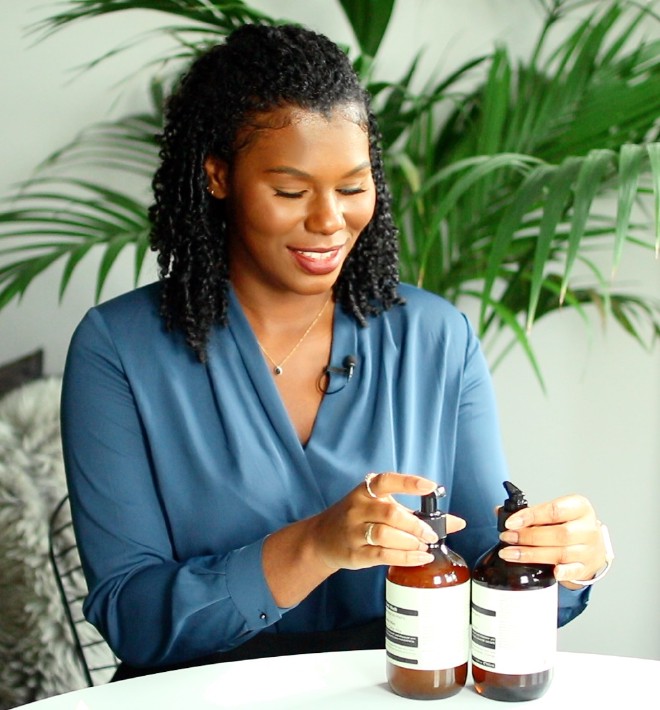Part of the DIY Recreations series.
In a world of brisk pumps of strategically placed hand wash, multiple squirts of sanitizers, and constant wipe downs with antibacterial wipes, it’s hard to imagine any decadence to the ritual of cleaning. But on the few occasions when you do reach out for soap and you’re met with Aesop, it transforms a necessary practice into an experience!
That experience, however, comes coupled with a $40 price tag, so it might be prudent to consider more affordable options. With only the ingredients on the back of the bottle, along with general knowledge around formulating liquid soaps, I’ve taken on the challenge to see if I can recreate Aesop’s Resurrection Aromatique Hand Wash at home! I learnt a great deal throughout this process, so it’s worth a read if you’re interested in working with surfactants and luxury products.
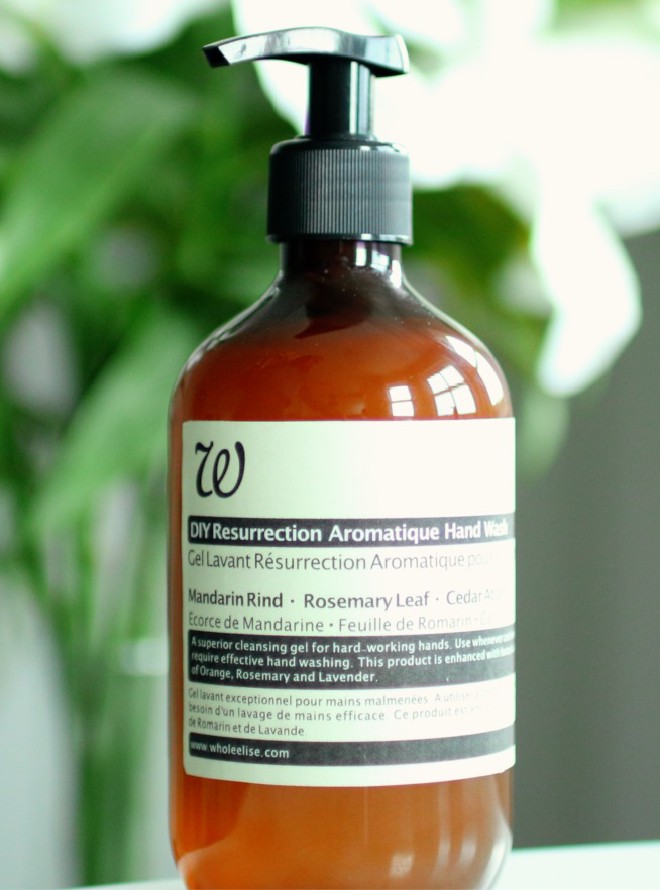
Ingredients
Phase 1
- 200g Distilled Water
- 180g Sodium Laureth Sulphate
- 40g Cocamidopropyl Betaine
- 40g PEG-40 Hydrogenated Castor Oil
- 20g Glycerine
Phase 2
- 1g Citric Acid
- 20g Sodium Chloride (substitute with 6g Guar Gum)
Cool down:
- 5g Essential Oil Blend (see details below)
- 5g Phenoxyethanol
Essential Oil Fragrance Blend (for 500g):
- 50 drops Orange Essential Oil
- 15 drops Mandarin Essential Oil
- 4 drops Lavender Essential Oil
- 2 drops Rosemary Essential Oil
- 1 drop Cedarwood Essential Oil
Method
- Measure out your phase one ingredients: Water, Sodium Laureth Sulfate, Cocamidopropyl Betaine, PEG-40 Hydrogenated Castor Oil and Glycerine.
- Combine in a heatproof bowl and gently melt over a low heat using a double boiler or bain-marie.
- Measure out your phase two ingredients: Sodium Chloride and Citric Acid. Once melted and cooled, check the pH and adjust by adding citric acid. The formula should have a pH value of 6.
- Either add the sodium chloride directly or create a salt solution and pour into the mixture at 0.5% - 1% concentrations. Mix thoroughly each time before continuing to add sodium chloride until you have reached your desired consistency.
- Create your fragrance blend by combining essential oils: Orange, Mandarin, Lavender, Rosemary and Cedarwood.
- Add the Cool Down ingredients: Essential Oil Blend and Phenoxyethanol and blend until thoroughly combined.
- Store your hand wash in a pump bottle, it will take an additional 24 hours to reach its final consistency and for any bubbles to subside.
This formula makes 500g of hand wash. See the interactive DIY Aesop hand wash formula.
Ingredients
The ingredients list is clean and concise which is to be expected from Aesop’s quality brand. No filler or bulking agents, each has its purpose and it’s good to see a brand using real essential oils rather than hiding behind dubious “fragrance”. However, depending on your stance on synthetic chemical compounds, the choice of surfactants might be met with scorn. Sodium Laureth Sulfate is the main cleanser used, along with Cocamidopropyl Hydroxysultaine and PEG-40 Hydrogenated Castor Oil. So let’s break down these ingredients to see what all the fuss is about.
Sodium Laureth Sulfate (SLES)
Sodium Laureth Sulfate is the primary surfactant in Aesop’s Resurrection Aromatique Hand Wash and is the second-largest ingredient by amount. Please note this is not to be confused with Sodium Lauryl Sulfate (SLS) - we’ll get to that. SLES is a very common synthetic surfactant that’s favoured by manufacturers for its cheap price and foaming abilities. SLES is in everything from toothpaste to body and face washes, it’s likely there’s at least one product in your house that uses it.
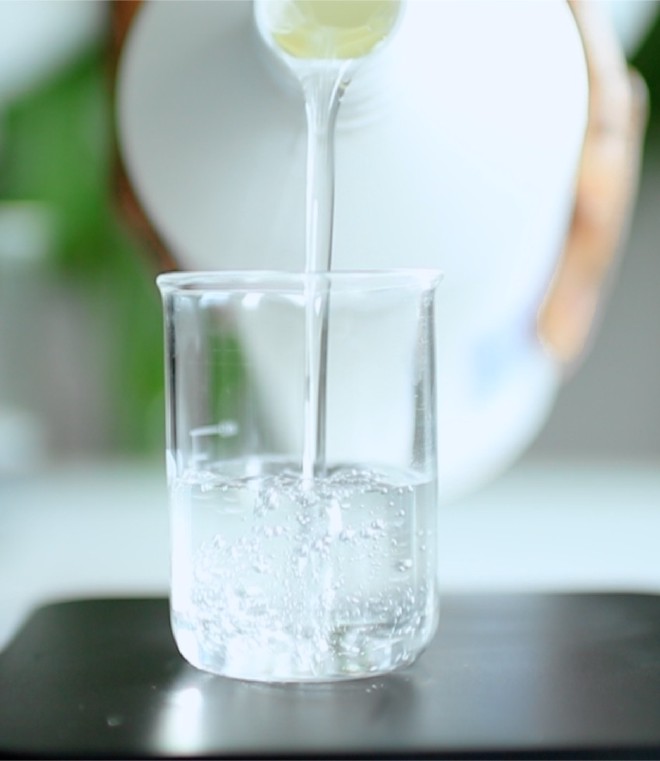
SLES is a clear, thin liquid with a mild scent that’s hard to detect even with no additional fragrance. It’s versatile and can be used as the sole surfactant, although it’s always recommended that you add as a secondary surfactant to increase foaming capabilities and reduce any harshness. Honestly, it was a joy to work with - the final hand wash had one of the fastest lathers which added to the luxurious feel.
So what’s the problem? Well, it’s complicated. Although derived from the infamous Sodium Lauryl Sulfate (SLS) through the process of ethoxylation, Sodium Laureth Sulfate is actually a milder, less skin-irritating surfactant and has now become commonplace in cosmetics. However, there are questions over its long term use as, during the ethoxylation process, batches of SLES can be contaminated with a potential carcinogen, 1,4-Dioxane. This can be easily removed but as it is not required that manufacturers disclose the presence of this uninvited guest, many have found they prefer not to use sodium laureth sulfate. Its use is completely down to personal preference and whilst it does perform well, there are a variety of less contentious surfactants that can be used in its stead. And considering the price tag, I would have preferred another surfactant was used as the base of this hand wash.
Cocamidopropyl Hydroxysultaine
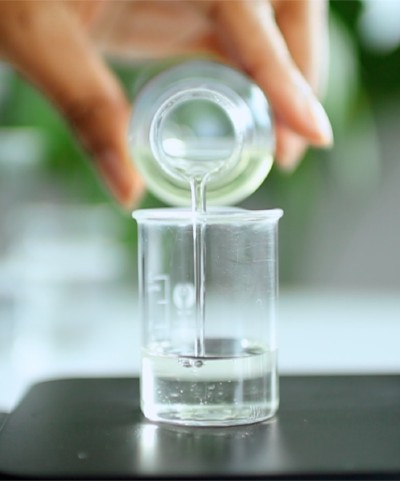
PEG-40 Hydrogenated Castor Oil
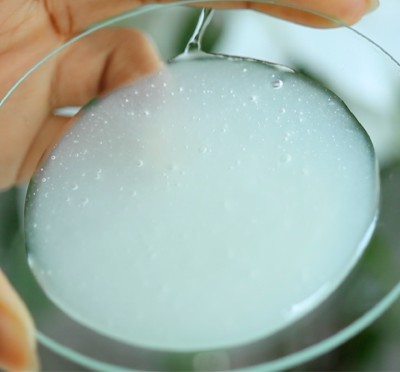
At this point, the list of surfactants is piling up so you might be tempted to skip this ingredient - especially as it’s not particularly natural. However, PEG-40 hydrogenated castor oil just so happens to be the main ingredient responsible for that signature oh-so-rich and silky texture that Aesop’s hand soap is known for. It also has a secondary function of solubilising the essential oil blend, as well as being the sole emollient to protect your hands during washing. It is possible to replace this ingredient but you would need to combine at least 3 others to get the same effects of: emollient, emulsifier and occulent.
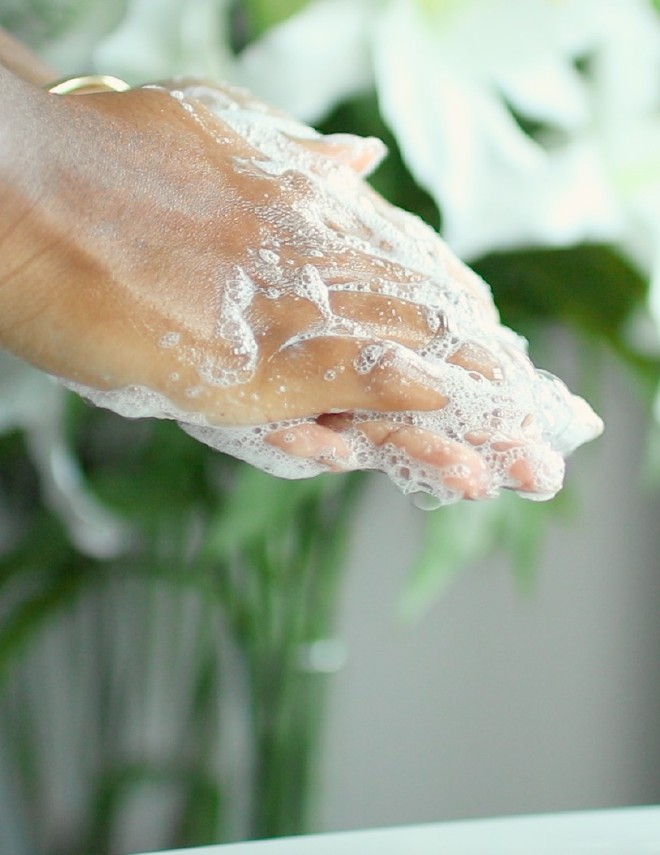
Putting it all together
Assembling water-based cleansers like hand washes are relatively simple when compared to creams, lotions and other emulsions so I started this process feeling confident. That soon evaporated…
How much surfactant should you use in hand washes?
Primarily hand washes are expected to be more intensive cleaners as grime, dirt, bacteria and grease are far more substantial than with what the rest of your body is likely to come into contact. The number of cleansing agents in formulas can range anywhere from 30% to over 75%. There’s not necessarily a direct correlation between the amount of overall surfactant and cleansing capabilities/harshness so you have a lot of freedom to experiment with concentrations. I have no idea the percentage of surfactants that Aesop use but I initially took a conservative approach only using 20% sodium laureth sulfate, with 38% surfactants overall. However, throughout my many attempts, I ended up boosting the sodium laureth sulfate to 36% with 58% surfactants overall.
How to combine ingredients
As for the assembly, unlike with emulsions, the order that you combine your ingredients here shouldn’t significantly impact the final product. However, I tried a couple of different options before I could settle on a method. I was only able to use sodium chloride to successfully thicken the hand wash when it was added prior to the salt, fragrance blend and preservative.
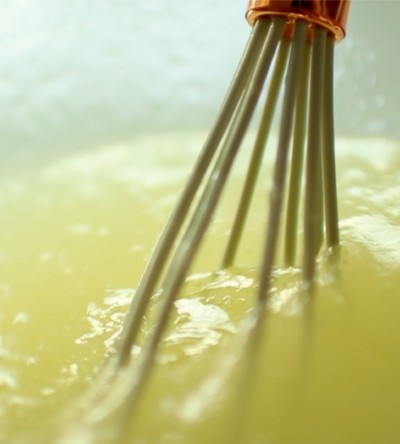
Reverse-engineering a hand wash
Where to begin! It’s like making your favourite dish using someone else’s recipe - except there’s no recipe just a pile of unfamiliar ingredients. There were three main areas that proved the most difficult: the appearance, the fragrance and the texture.
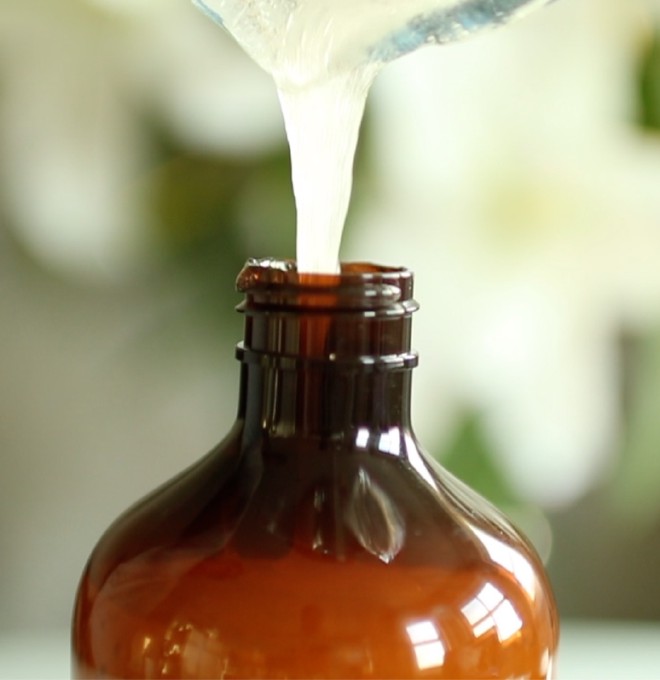
Aesop’s signature fragrance
Unsurprisingly the fragrance was the most complex element to nail when trying to recreate this luxury hand wash. Despite only being a blend of 5 essential oils, they can be combined to make countless different fragrances - many of which are far from the intended scent. There’s also the matter of quality. I’m ashamed to admit this but there was a stark difference in both the complexity and vibrancy of Aesop’s Resurrection Aromatique fragrance compared to the collection of essential oils I had.
Depending on the origin, extraction process and potency of the botanical, the same essential oils can vary widely in fragrance. This is only speculation but I would say a substantial amount of Aesop’s budget went to sourcing qualities essential oils and the proof is in the fragrance.
But don’t lose hope, it’s more than possible to create beautiful fragrance blends at home with what you have! Just note that there might be some discrepancies when you’re trying to recreate a fragrance even if you have the measurements.
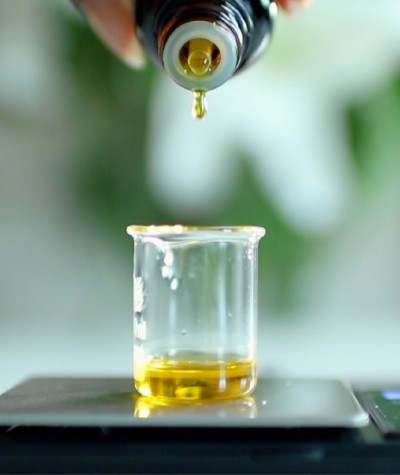
To start, I used the order of the essential oils in the ingredients list to determine the quantity of each oil. I was genuinely shocked at how bad it turned out, the predominant smell was cedarwood. As a base note, it lingers longer but it seemed to completely overpower even the citrus top notes.
Even taking into consideration the difference in quality between my essential oils and that of a luxury brand, it just doesn’t seem likely that the order on the bottle corresponds with the amount of each essential oil used. After some research, it does seem like there is an exception made for “fragrance” whereby it doesn’t necessarily need to be stated in order of amount on product ingredient lists. With this in mind, I completely abandoned trying that approach and instead decided to play it by ear - well nose in this case! The result was a wonderfully vibrant citrus fragrance with calmer herbal and woody notes. It does vary from Aesop’s but if you like one you’ll likely be able to enjoy the other.
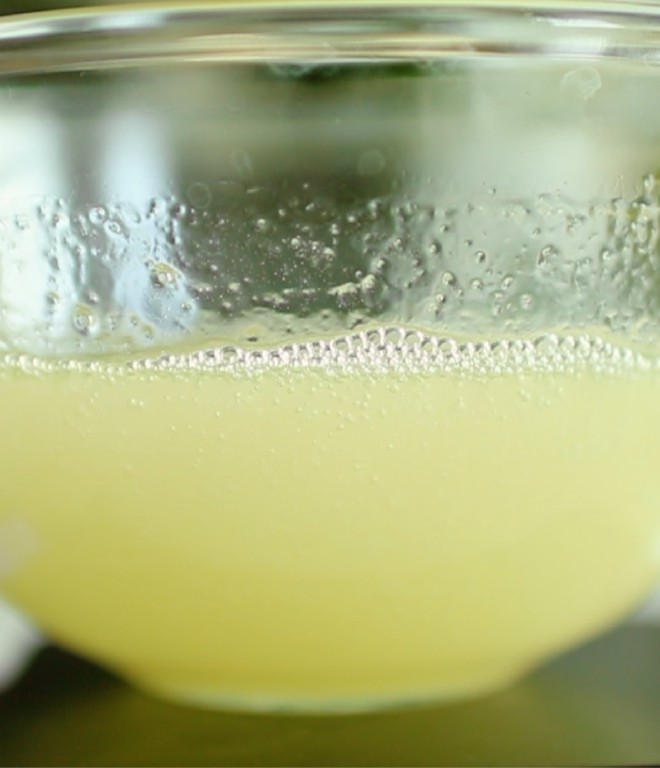
Texture: getting a silky smooth hand wash
All soaps clean so how exactly do you make luxury hand wash? Well my friend, you make it feel luxurious! Other than noticing if my hands feel exceptionally dry after washing them - most hand washes go unnoticed in my day to day routine. It’s only in formulating this DIY Aesop that I began to truly appreciate what separates the cream of the crop. The closest way I can describe Aesop soap is comparing it to loose set honey. It’s surprisingly viscous - resembling more of a thick liquid than a gel. What stands out however is how effortlessly it spreads across the surface of your hands, coating your skin like a massage oil rather than a cleanser.
There’s a weight to it that makes it irresistibly indulgent, coaxing you to rub your hands together all while soft suds continue to lather. Looking at the ingredients, the main element responsible for this has to be the PEG-40 hydrogenated castor oil.
I was initially sceptical as to whether it was necessary to include but having made both versions with and without it, I can confidently state that it makes a difference.
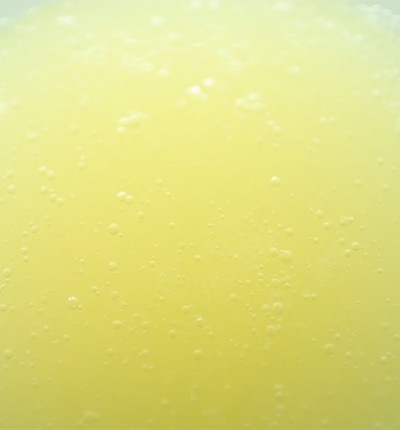
If you’d like to stick to natural ingredients, incorporating an oil into your hand wash will give it similar emollient properties albeit not quite as convenient. PEG-40 hydrogenated castor oil also works as a solvent making it easy to use in both water and anhydrous formulas, whilst also allowing the fragrance oils to disperse throughout the hand wash. If you’re using oils, then you’ll need to add an emulsifier and likely a stabiliser to ensure the hand wash stays in tact.
This isn’t necessarily a deal breaker, in fact natural oils will have several additional emollient benefits that you can play around with - but it is something you’ll need to consider. Sodium chloride is also responsible for the smooth, viscous final texture of Aesop soap, but that unfortunately is where I faced some issues.
How to thicken hand wash with salt
Sodium chloride is a natural thickener that’s common in cosmetic products, especially cleansers. It provides viscosity without altering the colour, fragrance or basic properties of the formula. So what’s not to like? Well as with all natural thickeners it can be extremely sensitive and difficult to work with.
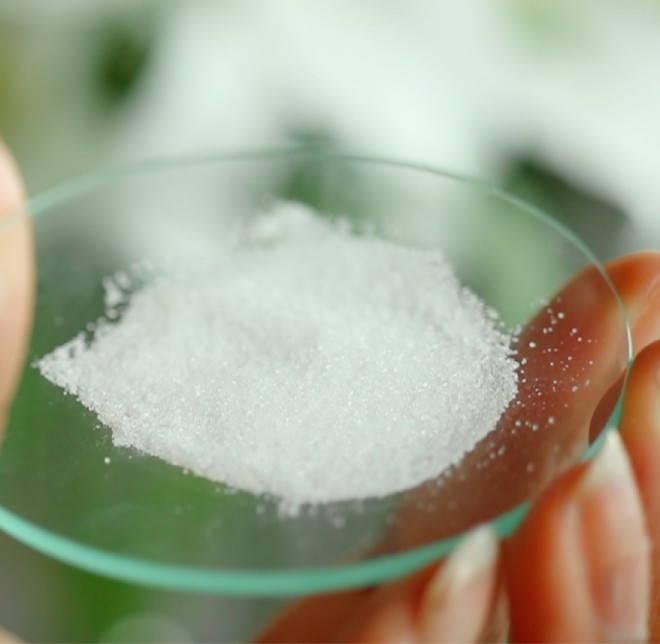
I really had trouble getting my formula to thicken by just using salt, this can be attributed to a few reasons:
- Salt thickens the sodium laureth sulfate and not the entire mixture. Unlike with gums, salt discriminates and furthermore is only effective on certain surfactants.
- The range of salt concentration at which a formula will get thicker or thinner. If you were to map the increase of salt on a chart, it would resemble a bell curve. Add just the right amount and you have a wonderfully thickened hand wash, too much or too little results in a thin solution.
- The pH of the formula affects the performance of the salt. Typical pH balance for skincare products fall within the range of 5 - 7. Throughout the course of this experiment I found that the sodium chloride was at it’s most effective with a pH of 6.
I also opted to make a salt solution rather than directly adding the grains of salt, I’m not sure if this had any impact on the thickening but it did ensure that all the salt had completely dissolved. I’d like to formulate a liquid cleanser from scratch using sodium chloride as the primary thickener in order to really get to grips with it, but for now, it was mostly trial and error for me to end up with a hand wash that was even remotely thick!
Can you use gum instead of salt?
Absolutely! If you experience some of the same troubles, I recommend substituting the sodium chloride with 1.2% Guar Gum. It has a similar final texture to that of salt - it’s viscous but still liquid making it a great substitute. You can, of course, use Xanthan Gum but you will get a more gel-like consistency than runny honey.
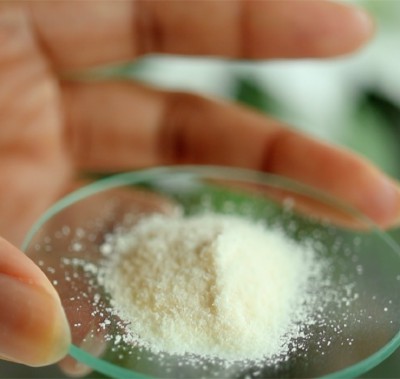
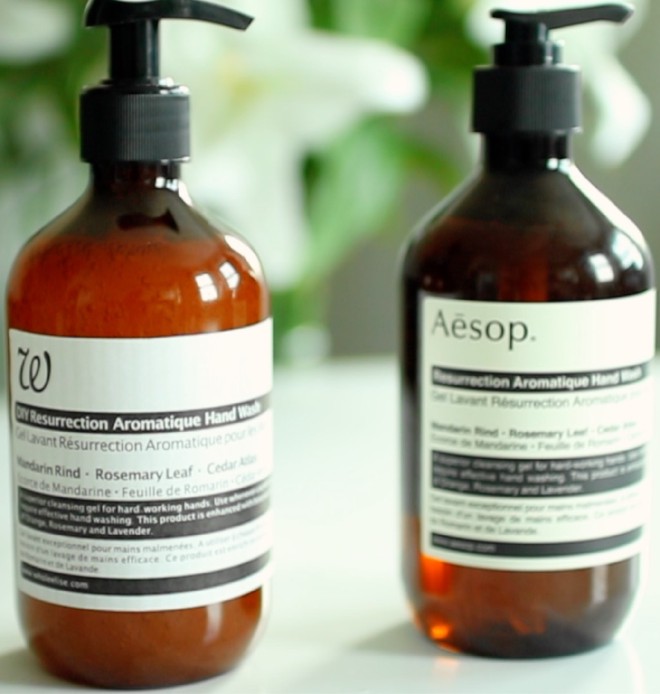
Matching Appearance
The appearance is really the result of the first two points: fragrance and texture. Sodium chloride makes a clear viscous liquid, while the rich golden colour is thanks to the mandarin and orange essential oil. So in theory there should be a strong resemblance as long as you keep to the ingredients stated. In practice… not so much!
I added a lot of salt to the solution in order to achieve my final texture, roughly 4%. It’s likely I used too much and as a result, the clarity and cloud point was compromised.
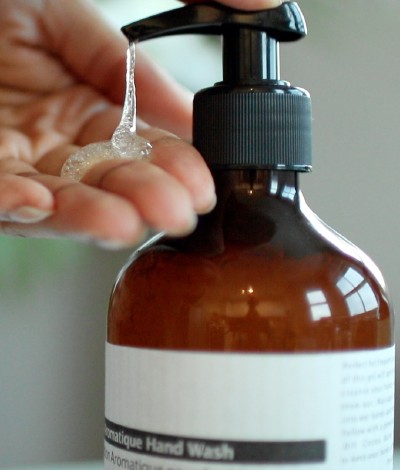
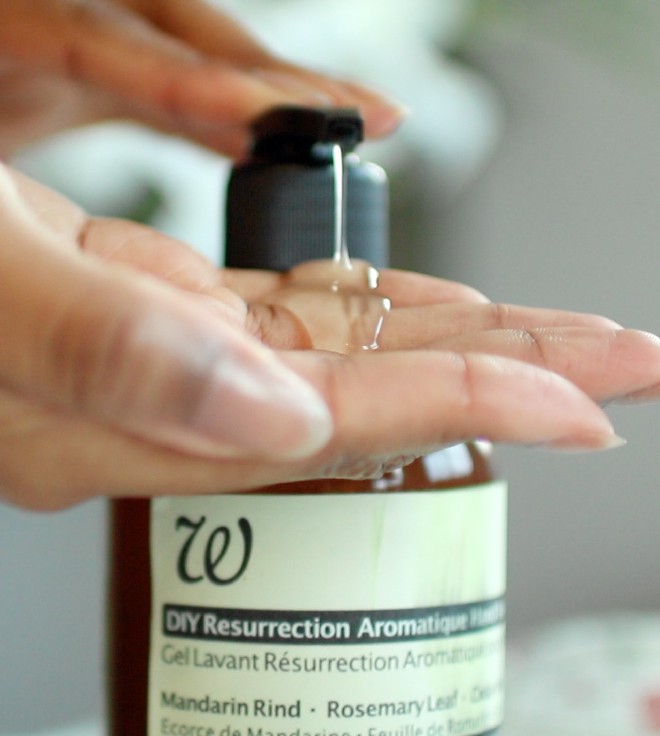
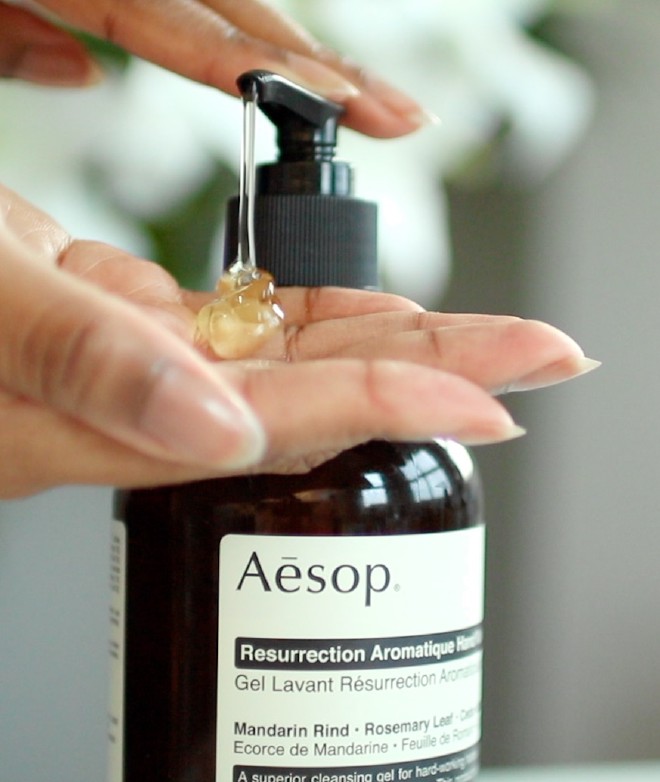
A worthwhile DIY?
Overall cost
The total cost of ingredients was roughly £5 (or about $6.60). Not bad, compared to Aesop’s $40 price tag!
Of course – it’s not possible to buy one dollar’s worth of hydrogenated castor oil! So there’s a higher upfront cost to buy any ingredients you may not have yet. (See my guide on where to buy natural cosmetics ingredients if you’re wondering where to find some of these.) However, if you already have most or all of these ingredients, DIY hand wash looks like a pretty cost effective option!
Here’s a detailed breakdown of the rough costs:
| Ingredient | Price (£) | Amount (as sold) | 500g recipe cost (£) |
|---|---|---|---|
| Sodium Laureth Sulphate | 7.00 | 1000ml | 1.22 |
| Cocamidoproply Betaine | 7.00 | 1000ml | 0.27 |
| PEG-40 Hydrogenated Castor Oil | 11.03 | 500ml | 0.96 |
| Glycerine | 10.00 | 1000ml | 0.16 |
| Phenoxyethanol | 14.95 | 100ml | 0.75 |
| Citric Acid | 4.50 | 250g | 0.02 |
| Essential Oils | 3.00 | 10ml | 1.67 |

Final thoughts
Overall I had a lot of fun trying to recreate a product that I genuinely like. Often times with homemade products, you can compromise on effectiveness or aesthetics due to restrictions on ingredients and equipment. However, this gave me an opportunity to explore new ingredients and as a result, I have a greater understanding of the advantages and disadvantages. Per bottle, my DIY Aesop Hand Wash comes in at a fraction of the price of its inspiration and as it’s customisable it would make a wonderful gift for friends and family.
It’s a good effort but I wasn’t able to exactly replicate Aesop’s Resurrection Aromatique Hand Wash formula, and there are a few amendments that I would make to produce something more in line with the formulas I typically create and share. So, if you’re interested in making your own luxury hand wash (with a few more familiar ingredients!), I highly recommend using my alternative luxury hand wash formula.
